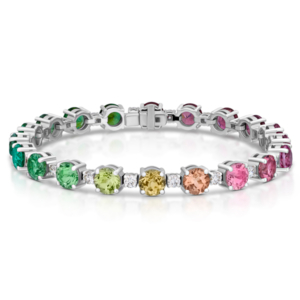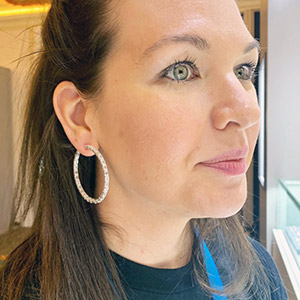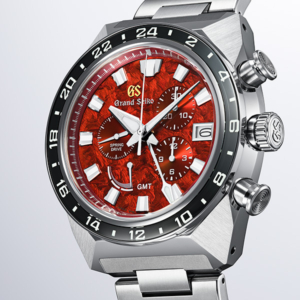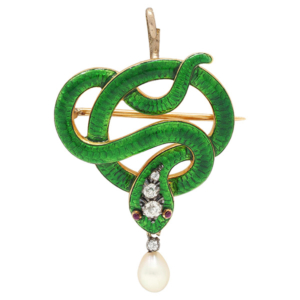
Perhaps it’s fitting that Blue Nile, the site that popularized discount diamonds, was sold at a discount.
In 2017, Bain Capital, along with Bow Street and Adama Partners, took the then-public e-tailer private for $500 million. In June, Blue Nile filed for an IPO, with a valuation of $873 million.
But this week, Signet snatched it up for $360 million in cash—slightly more than it paid for James Allen/R2Net ($328 million), and less than it paid for 21-store chain Diamonds Direct ($490 million).
Why so cheap? First, Bain was “eager to cash out,” according to CNBC. Most private equity firms hold companies for about five years; Blue Nile was purchased in 2017, so this sale was more or less on schedule.
In 2018, Blue Nile executives talked openly about an eventual IPO. Four years later, they arranged a merger with a SPAC (special purpose acquisition company). As the market for SPACs has cooled considerably, it’s perhaps not surprising that Blue Nile opted for the safer route of selling to Signet.
Having identified online as a focus area, Signet is following its traditional playbook: growth through acquisition. A former exec once told me it’s looked at buying almost every jeweler out there—even Tiffany.
According to CNBC, Signet “approached Blue Nile last year about an acquisition.” A deal may not have worked out then. Here, one came together rather quickly: Signet first applied for regulatory approval in early July, three weeks after Blue Nile filed for its IPO.
If this deal goes through, Signet will have eight U.S. banners: Kay, Jared, Zales, Piercing Pagoda, James Allen, Rocksbox, Diamonds Direct, and Blue Nile. That’s quite a change for a company that, just a decade ago, had two.
James Allen, Blue Nile, Diamonds Direct, and Jared are very different businesses with similar models: They target men, sell “accessible luxury,” and have built their business on engagement rings (though Jared’s positioning has fluctuated). They have traditionally seen one another as rivals, particularly James Allen and Blue Nile, and Jared and Diamonds Direct.
Signet CEO Gina Drosos notes that Blue Nile’s customers are younger and more affluent than standard Signet shoppers. It’s an e-tailer that regularly sells diamonds for $100,000 or more.
In recent years, Blue Nile’s main engine of growth has been its 21 showrooms, clustered in the usual dot-com hot spots: coastal cities and large metros like Chicago and Detroit. Diamonds Direct, which Signet purchased last year, also has 21 stores, but they have large footprints and are mostly located in midsize Midwestern and Southern cities, like New Orleans and Cleveland. (They overlap in four cities: Tysons, Va.; Charlotte, N.C.; and Houston and Austin, Texas.)
One could see how Blue Nile and Diamonds Direct—the two highest-end businesses—might complement each other, but where do Jared and James Allen, which have done mash-ups, fit?
Down the line, we may see these names consolidate. Signet has a long history of buying established businesses, like Marks & Morgan, retaining those names for a while, then transitioning them to its core banners. There are a lot of puzzle pieces here, and it’s not clear how—and if—they’ll fit together.
Other thoughts:
– Blue Nile has had some success taking its model overseas. Signet’s business is mostly concentrated in the United States, Canada, and the United Kingdom. It’s never seemed all that interested in expanding beyond those three English-speaking markets. This could be its gateway.
– For all the jewelry companies it now controls, Signet owns no “Tiffany”-type chain. Still, some believe it wants one, especially as it continually buys higher-price-point businesses. Most of the obvious candidates have already been gobbled up by luxury conglomerates. Yet, don’t be surprised if that happens, even if non-accessible luxury doesn’t fit in Signet’s traditional wheelhouse. (And there’s a precedent: Zale’s ownership of high-end chain Bailey Banks & Biddle.)
– Prior management used to talk about “Signetizing” their acquisitions. While some Signetizing is probably inevitable, Drosos has displayed a healthy curiosity about the businesses she buys—whether it’s Diamonds Direct’s large-footprint model, Blue Nile’s small-footprint showrooms, or Rocksbox’s rentals. She seemingly wants to understand every way jewelry is sold. That inquisitiveness and thirst for knowledge is one reason she’s a successful executive.
Then again, some fret about so much jewelry information falling into the hands of one company.
– This purchase shrinks the number of players on the field. We are hearing alarm bells about the industry’s continuing consolidation—which, to be fair, is hardly limited to jewelry.
Signet claims a 9% share of the overall jewelry market. The Blue Nile deal will bring that to about 10%. That doesn’t make it a hugely dominant player, certainly not compared with other industries. Even so, its ever-increasing size makes it harder for even a well-established company like Brilliant Earth to compete.
This deal offers plenty to cheer about. Blue Nile needed a home. Its track record as a public company wasn’t great. And there aren’t many companies shopping for jewelry sites.
Signet is a strategic player. It’s committed to the jewelry business. This lets the industry better pool its resources. Right now, when Blue Nile and James Allen fight, Google and Facebook win.
On the other hand, competition is good. Competition is healthy. Competition is, arguably, the backbone of capitalism. When companies battle for consumer dollars, they bring new ideas to the table.
The problem with putting a lot of companies under one roof is, what happens if that roof gets shaky? Signet has had issues in the past. Current management seems to have righted the ship. But they won’t be there forever.
The acquisition of Blue Nile appears smart. It seems likely to succeed. Still, let’s be cautious about putting too many eggs in one Signet.
Correction: Bain executives discussed an IPO in 2018, but didn’t plan one for that year.
Top: A Blue Nile showroom (Photo courtesy of Blue Nile)
Follow JCK on Instagram: @jckmagazineFollow JCK on Twitter: @jckmagazine
Follow JCK on Facebook: @jckmagazine






